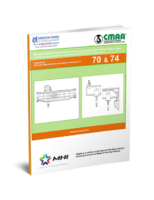Particle Probes measure particles up to 2.5 mm.
Press Release Summary:

Inserted directly into process line, Particle Probes provide real-time measurement of particle size and velocity. Standard Model IPP 50 is for larger particles and granulates, where process concentration is low and no dilution is needed. Model IPP 50-SE uses air for concentrated systems and for materials that are adherent and require dispersion. Intrinsically safe Model IPP 50-Se features low power input and is used in hazardous conditions.
Original Press Release:
New Additions to Malvern Process Systems Range
Parsum extends capabilities to include applications
for particle sizing up to 2500 micron
Malvern Instruments has added a new range of particle measurement systems to its portfolio of analyzers for in-process applications. Parsum in-line particle probes are specifically designed to measure larger particles up to 2.5 mm in a wide variety of processes, including chemicals and food products and all types of granulates. Since Parsum is inserted directly into the process line, there is no need for any sampling. Real-time measurement, with automatic feedback to a central control room or computer terminal, enables direct upstream process control and monitoring of current production trends.
Ideal measuring points are on the exit of granulators or spray driers to measure final grades, or on the feed materials for mills as an indication of "processability". In both scenarios, the probes are used principally for process optimization.
Three systems are available to suit individual process environments. The Parsum IPP 50 is the standard unit for larger particles and all types of granulates, where the process concentration is low and no dilution is needed. Parsum IPP 50-SE uses air for more concentrated systems and for materials that are adherent and require dispersion. Also available is the intrinsically safe IPP 50-Se unit, whose low power input allows its use in hazardous conditions.
The Parsum probe works on a patented fibre optic counting principle. It simultaneously measures particle size and the velocity of individual particles. The system can calculate number and size distributions based on statistics coupled with the technique of Spatial Filter Velocimetry. Parsum requires no calibration, produces volumetric size and linear number distributions, provides constant measurement and does not assume particles to be spherical.
Spatial Filter Velocimetry is a well-established technique in which particles pass through a laser beam, casting a shadow on a linear array of detectors. As the particle interrupts the light between transmitter and receiver, the time taken to cut across the laser beam is measured. A burst signal is generated due to the falling particle and its frequency measured, and it is from this that particle velocity is calculated. In passing through the laser beam the particle generates a secondary 'pulse' signal which indicates the time associated with the falling particle as it blocks a single detector in the array. Particle diameter is determined using chord length calculated by knowing the time of the pulse signal, velocity of the moving particle and the distance between the spatial filters.
Further details of this and Malvern Process Systems full range can be found at www.malps.com
USA contact:
Marisa Fraser, Malvern Instruments Inc
10 Southville Road
Southborough, MA 01772, USA
Tel: +1 508 480 0200
Fax: +1 508 460 9692
marisa.fraser@malvernusa.com




